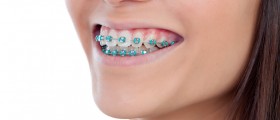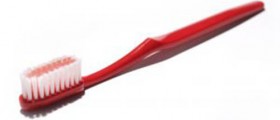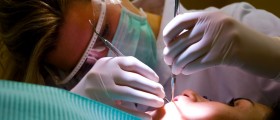
Information on Gingivitis
Gingivitis is a term used for the inflammation which occursat the mucosal epithelial tissue which surrounds the cervical portions of theteeth. Gingivitis is a certain type of medical condition which can beclassified by duration (chronic or acute), etiology (plaque induced,infectious, nutritional, hormonal or drug induced) and clinical appearance(purulent, necrotizing, hemorrhagic or ulcerative). Out of all theaforementioned types of gingivitis, the most common one is chronic gingivitis,which is induced by dental plaque in most cases. When person has a healthymouth and gingiva, the gingiva is characterized by a pink color and theintradental papillae are sharp and they also fill the intradental space. Localedema is not present in such cases. Moderate chronic gingivitis ischaracterized by blunted and edematous papillae. The root areas are commonlycovered by area of edema, and pallor is not uncommon in these areas. Thepapillae may also bleed during brushing.
Pathophysiology
The most common type of gingivitis is usually triggered byinadequate oral hygiene and the accumulation of microbial plaques. This type ofgingivitis also involves the marginal gingiva. In the initial stages ofgingivitis, a person may experience lesions which gradually progress towardsthe advanced form of the disease.After only a few days upon the accumulation ofplaque, the initial stage of the inflammatory response takes place. Theincreasing of transmigration of neutrophils and gingival fluids also takesplace. After only a week the early lesions occur. In some cases there may beplasma cells and monocytes present. As the lesions gradually become chronicthey get accompanied by B lymphocytes and plasma cells. The inflammationgradually becomes chronic and it progresses over time, so it causes thedevelopment of pockets at the areas where the gingiva gets separated from thetooth. With time, the pockets get deeper, they are easily irritated and theymay bleed during chewing, flossing or tooth brushing. If the inflammationpersists, it leads to the destruction of the local alveolar bone and thebreakdown of periodontal ligaments. The end result of all that is loosening andfalling out of teeth. ANUG is completely different because it is normallyassociated with completely different types of microorganisms. It is usually characterizedin accelerated destruction of all tissues affected by the disease. It is very difficultto determine the frequency of the disease because there is no agreement on a universalset of criteria.

















Your thoughts on this
Loading...